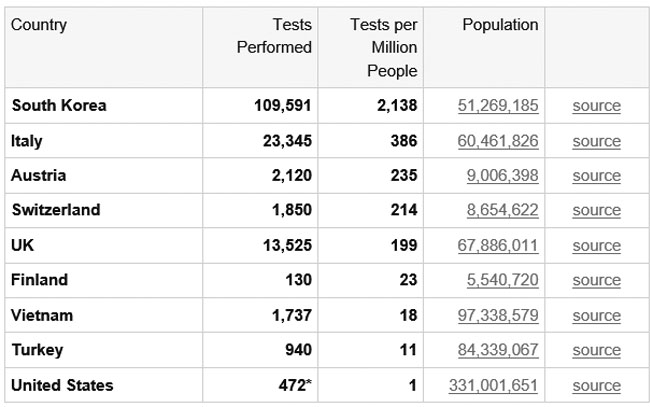BLOGS | 18 March 2020
앤지오텐신과 코로나바이러스
Angiotensin and the Coronavirus
By Derek Lowe
https://blogs.sciencemag.org/pipeline/archives/2020/03/17/angiotensin-and-the-coronavirus
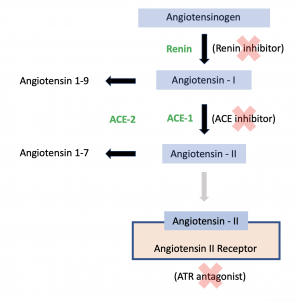
NEWS | 17 March 2020
한국에서 코로나바이러스 환자가 급감했다. 한국의 성공 비결은 무엇일까?
Coronavirus cases have dropped sharply in South Korea. What’s the secret to its success?
By Dennis Normile
BLOGS | 16 March 2020
CureVac의 흥미로운 사례
The Curious Case of CureVac
By Derek Lowe | Mar 16th, 2020
https://blogs.sciencemag.org/pipeline/archives/2020/03/16/curious-case-of-curevac
NEWS | 16 March 2020
‘똑딱이는 시한 폭탄': 과학자들은 아프리카의 코로나바이러스 확산 우려
‘A ticking time bomb’: Scientists worry about coronavirus spread in Africa
By Linda Nordling
NEWS | 15 March 2020
전염병 전문가 Anthony Fauci를 만나다. 백악관의 코로나바이러스 대응 구체화
Meet Anthony Fauci, the epidemic expert trying to shape the White House’s coronavirus response
By John Travis
NEWS | 14 March 2020
왜 수십 가지의 질병이 계절에 따라 점점 쇠약해 지는가, 코로나도 그럴 것인가?
Why do dozens of diseases wax and wane with the seasons—and will COVID-19?
By Jon Cohen
The calendar of epidemics
At least 68 infectious diseases are seasonal, according to a 2018 paper by Micaela Martinez of Columbia University. But they’re not in sync, and seasonality varies by location. In this graphic, based on U.S. federal and state health records, each bubble represents the percentage of annual cases that occurred in each month. (The data are old because many diseases declined—in some cases to zero—after introduction of vaccines.)
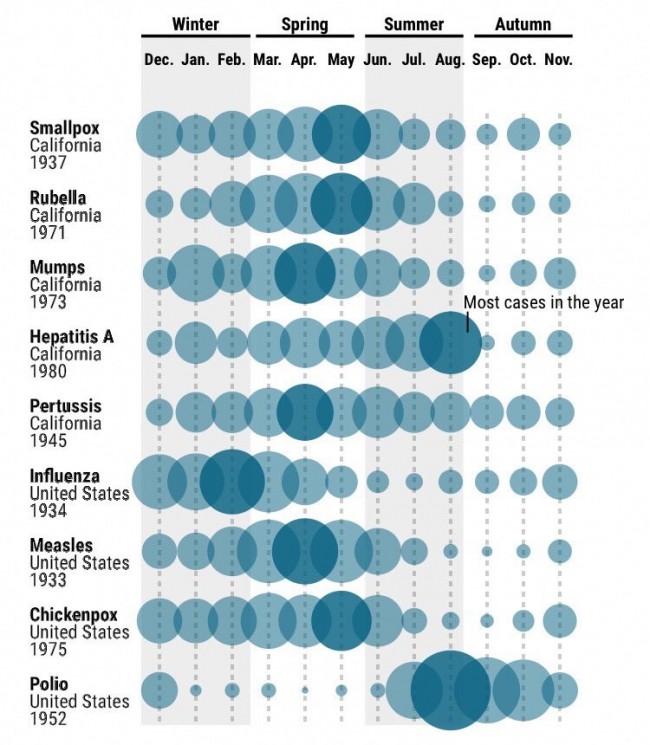
(GRAPHIC) N. DESAI/SCIENCE; (INTERACTIVE) X. LIU/SCIENCE; (DATA) PROJECT TYCHO
PERSPECTIVES AND COMMENTARY | 14 March 2020
부탁을 들어주세요.
Do us a favor
By H. Holden Thorp
https://science.sciencemag.org/content/367/6483/1169
NEWS | 14 March 2020
유전체 분석을 통한 코로나바이러스의 경로 추적
Genome analyses help track coronavirus' moves
By Kai Kupferschmidt
https://science.sciencemag.org/content/367/6483/1176
NEWS | 14 March 2020
공항의 검사가 소용없다는 연구결과가 나오다.
Airport screening is largely futile, research shows
By Dennis Normile
https://science.sciencemag.org/content/367/6483/1177
PERSPECTIVES AND COMMENTARY | 14 March 2020
nCoV 삼량체 스파이크의 구조
Structure of the nCoV trimeric spike
By Michael Funk, et al.
https://science.sciencemag.org/content/367/6483/1207.3
RESEARCH AND REVIEWS | 14 March 2020
예비 융합 형태에서 2019-nCoV 스파이크의 Cryo-EM 구조
Cryo-EM structure of the 2019-nCoV spike in the prefusion conformation
By Daniel Wrapp, et al.
https://science.sciencemag.org/content/367/6483/1260
Fig. 1 Structure of 2019-nCoV S in the prefusion conformation.

(A) Schematic of 2019-nCoV S primary structure colored by domain. Domains that were excluded from the ectodomain expression construct or could not be visualized in the final map are colored white. SS, signal sequence; S2′, S2′ protease cleavage site; FP, fusion peptide; HR1, heptad repeat 1; CH, central helix; CD, connector domain; HR2, heptad repeat 2; TM, transmembrane domain; CT, cytoplasmic tail. Arrows denote protease cleavage sites. (B) Side and top views of the prefusion structure of the 2019-nCoV S protein with a single RBD in the up conformation. The two RBD down protomers are shown as cryo-EM density in either white or gray and the RBD up protomer is shown in ribbons colored corresponding to the schematic in (A).
Fig. 2 Structural comparison between 2019-nCoV S and SARS-CoV S.
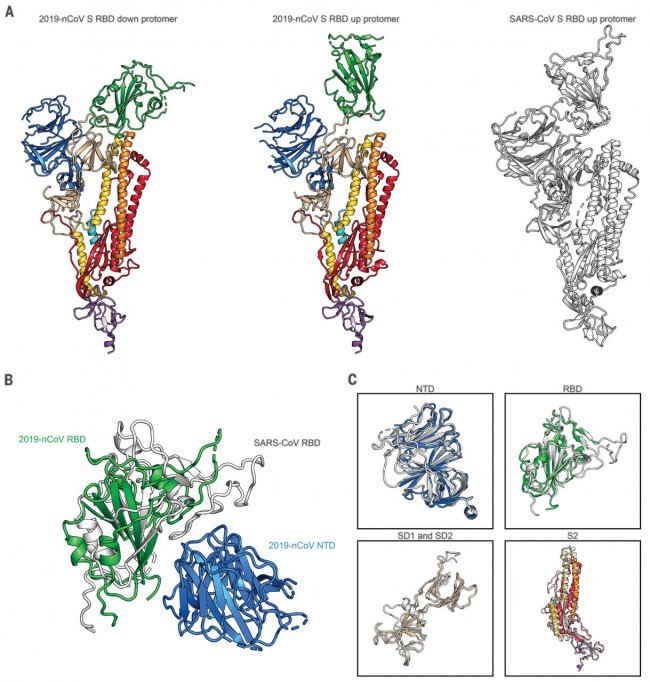
(A) Single protomer of 2019-nCoV S with the RBD in the down conformation (left) is shown in ribbons colored according to Fig. 1. A protomer of 2019-nCoV S in the RBD up conformation is shown (center) next to a protomer of SARS-CoV S in the RBD up conformation (right), displayed as ribbons and colored white (PDB ID: 6CRZ). (B) RBDs of 2019-nCoV and SARS-CoV aligned based on the position of the adjacent NTD from the neighboring protomer. The 2019-nCoV RBD is colored green and the SARS-CoV RBD is colored white. The 2019-nCoV NTD is colored blue. (C) Structural domains from 2019-nCoV S have been aligned to their counterparts from SARS-CoV S as follows: NTD (top left), RBD (top right), SD1 and SD2 (bottom left), and S2 (bottom right).
Fig. 3 2019-nCoV S binds human ACE2 with high affinity.
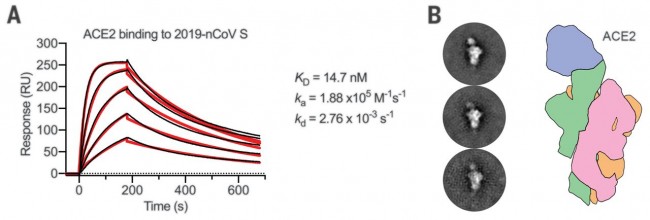
(A) Surface plasmon resonance sensorgram showing the binding kinetics for human ACE2 and immobilized 2019-nCoV S. Data are shown as black lines, and the best fit of the data to a 1:1 binding model is shown in red. (B) Negative-stain EM 2D class averages of 2019-nCoV S bound by ACE2. Averages have been rotated so that ACE2 is positioned above the 2019-nCoV S protein with respect to the viral membrane. A diagram depicting the ACE2-bound 2019-nCoV S protein is shown (right) with ACE2 in blue and S protein protomers colored tan, pink, and green.
Fig. 4 Antigenicity of the 2019-nCoV RBD.
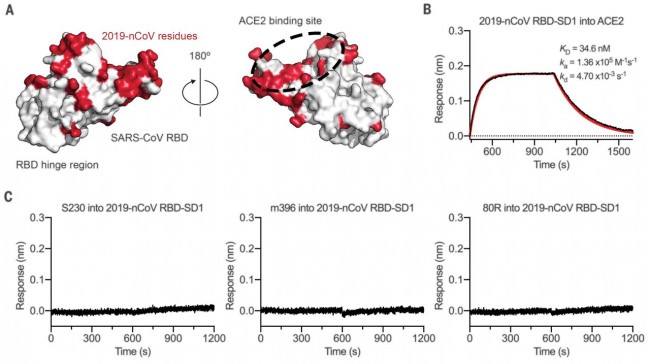
(A) SARS-CoV RBD shown as a white molecular surface (PDB ID: 2AJF), with residues that vary in the 2019-nCoV RBD colored red. The ACE2-binding site is outlined with a black dashed line. (B) Biolayer interferometry sensorgram showing binding to ACE2 by the 2019-nCoV RBD-SD1. Binding data are shown as a black line, and the best fit of the data to a 1:1 binding model is shown in red. (C) Biolayer interferometry to measure cross-reactivity of the SARS-CoV RBD-directed antibodies S230, m396, and 80R. Sensor tips with immobilized antibodies were dipped into wells containing 2019-nCoV RBD-SD1, and the resulting data are shown as a black line.
NEWS | 14 March 2020
시약이 미국 코로나바이러스 환자들에게 효과적이었나?
Did an experimental drug help a U.S. coronavirus patient?
By Jon Cohen
https://www.sciencemag.org/news/2020/03/did-experimental-drug-help-us-coronavirus-patient
PERSPECTIVES AND COMMENTARY | 12 March 2020
신종 코로나바이러스 발생: 팬데믹을 방지하기 위한 구상
New coronavirus outbreak: Framing questions for pandemic prevention
By Scott P. Layne, et al.
https://stm.sciencemag.org/content/12/534/eabb1469
NEWS | 11 March 2020
‘우리는 뒤쳐졌다.’ 미국 병원들이 코로나바이러스 시험에 맞서다.
‘We're behind the curve’: U.S. hospitals confront the challenges of large-scale coronavirus testing
By Jon Cohen
NEWS | 11 March 2020
학교를 폐쇄하면 코로나바이러스 확산 방지을 느리게 할 수 있나? 과거에서 단서 제공
Does closing schools slow the spread of coronavirus? Past outbreaks provide clues
By Jennifer Couzin-Frankel
https://www.sciencemag.org/news/2020/03/does-closing-schools-slow-spread-novel-coronavirus
NEWS | 10 March 2020
돌연변이는 코로나바이러스가 어떻게 움직이는지 보여줄 수 있지만 확대해석하기 쉽다.
Mutations can reveal how the coronavirus moves—but they’re easy to overinterpret
By Kai Kupferschmidt
BLOGS | 10 March 2020
Covid-19 생물학적 치료 요법 검토
Covid-19 Biologic Therapies Reviewed
By Derek Lowe
https://blogs.sciencemag.org/pipeline/archives/2020/03/09/covid-19-biologic-therapies-reviewed
NEWS | 7 March 2020
중국의 COVID-19 전략은 다른 곳에서도 통할까?
Can China's COVID-19 strategy work elsewhere?
By Kai Kupferschmidt, et al.
https://science.sciencemag.org/content/367/6482/1061
NEWS | 7 March 2020
왜 공항의 검사로 코로나바이러스의 확산을 막을 수 없는가
Why airport screening won’t stop the spread of coronavirus
By Dennis Normile
https://www.sciencemag.org/news/2020/03/why-airport-screening-wont-stop-spread-coronavirus
BLOGS | 6 March 2020
Covid-19 소분자 치료 요법 검토
Covid-19 Small Molecule Therapies Reviewed
By Derek Lowe
https://blogs.sciencemag.org/pipeline/archives/2020/03/06/covid-19-small-molecule-therapies-reviewed
SITE INFORMATION AND HELP | 5 March 2020
코로나바이러스: 연구, 비평 및 뉴스
Coronavirus: Research, Commentary, and News
https://www.sciencemag.org/coronavirus-research-commentary-and-news
BLOGS | 5 March 2020
현실이다
Get Real
By Derek Lowe
https://blogs.sciencemag.org/pipeline/archives/2020/03/04/get-real
